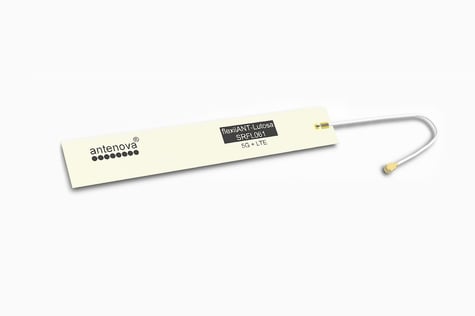The growth of technology is exponential with advances taking place across most industries, and cellular communications are no different. 5G has seen rapid expansion; last year the number of countries with 5G deployments increased by just over 60%. The superior speeds and bandwidths of 5G compared to the previous 4G has driven this shift in cellular technology, but there are still limitations of size, efficiency and performance that can make it difficult to integrate 5G antennas into smaller devices and applications.
What are the challenges of integrating 5G antennas in small devices?
5G devices are becoming increasingly complex as the popularity and coverage of the network grows. Consumer devices like mobile phones and wearables have different demands of size, efficiency and performance when compared to non-consumer applications like specialised drones or medical surgery devices. 5G antennas are expected to meet these varying wireless demands whilst maintaining an ease of integration that shortens the design cycle as much as possible.
Antenna size is an important variable when it comes to the device design of 5G devices. Streaming cameras and a few IoT devices demand the fast speeds and high bandwidths of 5G but have established designs that need to be compact enough to fit in a pocket or on a wrist. The challenge involved in this is that 5G antennas are typically larger than their cellular predecessors. In order to maintain efficiency, the antennas’ ground plane needs to be a quarter of the size of the lowest wavelength. 5G uses lower or the same frequencies compared to previous cellular networks, which means wider wavelengths and larger antennas.
Device designers have the task of balancing efficiency and size for their devices. Fortunately, there are a wide variety of antenna types and technologies that can suit the different demands of smaller 5G applications and streamline the process.
What 5G antennas are suitable for small devices?
Flexible PCB/FPC antennas
PCB space is a valuable commodity for 5G devices, which is even more the case for smaller designs. Flexible PCB/FPC antennas solve this hurdle of PCB space by having their ground plane on the antennas themselves. They have an adhesive strip and can be placed freely on the housing of the device without occupying space on the host PCB. Flexible PCB antennas are also flexible, making them an effective solution for small 5G device integration.
SMD antennas
Surface mounted antennas are placed directly on the PCB alongside the rest of the device’s components. Because of this, the ground plane of the antenna is important when it comes to small 5G applications. The antenna needs to be suitable for the size of the device as well as allowing room for other important components. Antenova offers a selection of small 5G SMD antennas that maintain high levels of efficiency and performance with short ground planes.
Introducing Minima; the smallest 5G antenna
Antenova has recently unveiled their latest 5G SMD antenna, Minima. Minima measures in at 40 x 10 x 3.3 (mm), which makes it the smallest 5G antenna available on the market. It is a compact version of their previous Allani SMD antenna, and shares its features of high performance and multiple region support. Minima is suitable for narrower PCBs and can be used for a wide range of compact applications like sensors and remote monitoring.
Minima is an example of the advancement taking place in cellular antenna technology and 5G. Antenova is helping to bring 5G connectivity to more applications and industries to broaden the amount of devices that can enjoy the superior speeds and responsiveness it offers.
To find out more about Minima, download the data sheet below.




